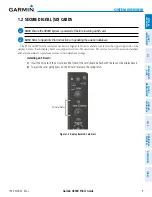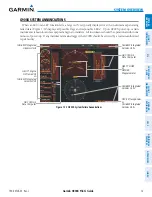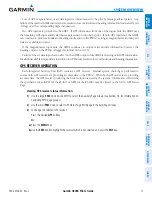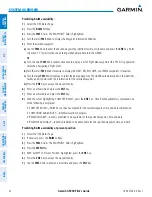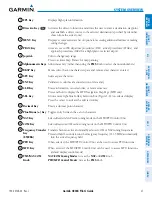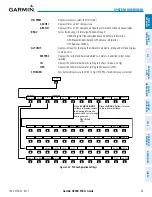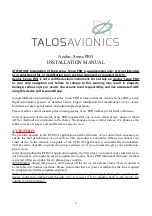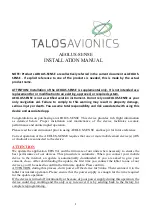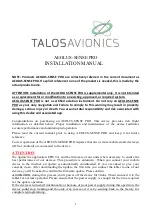
Garmin G900X Pilot’s Guide
190-00726-00 Rev. J
18
SYSTEM OVERVIEW
SY
STEM
O
VER
VIEW
FLIGHT
INSTRUMENTS
EIS
AUDIO P
ANEL
& CNS
FLIGHT
MANA
GEMENT
HAZARD
AV
OID
ANCE
AFCS
ADDITIONAL FEA
TURES
APPENDICES
INDEX
Figure 1-13 GPS Status Page
Satellite
Signal
Strength
Bars
Satellite Constellation
Diagram
Satellite Signal
Information
RAIM
Availability
Prediction
GPS
Receiver
Status
GPS sensor annunciations are most often seen after system power-up when one GPS receiver has acquired
satellites before the other or one of the GPS receivers has not yet acquired an SBAS signal. While the aircraft
is on the ground, the SBAS signal may be blocked by obstructions causing one GPS receiver to have difficulty
acquiring a good signal. Also, while airborne, turning the aircraft may result in one of the GPS receivers
temporarily losing the SBAS signal. If no failure message exists, check the GPS Status Page and compare the
information for GPS1 and GPS2. Discrepancies may indicate a problem.
GPS RECEIVER STATUS
The GPS solution type (ACQUIRING, 2D NAV, 2D DIFF NAV, 3D NAV, 3D DIFF NAV) for the active
GPS receiver (GPS1 or GPS2) is shown in the upper right of the GPS Status Page. When the receiver is
in the process of acquiring enough satellite signals for navigation, the receiver uses satellite orbital data
(collected continuously from the satellites) and last known position to determine the satellites that should be
in view. ACQUIRING is indicated as the solution until a sufficient number of satellites have been acquired
for computing a solution.
When the receiver is in the process of acquiring a 3D differential GPS solution, 3D NAV is indicated as the
solution until the 3D differential fix has finished acquisition. Satellite-Based Augmentation System (SBAS)
status should be indicated as INACTIVE at this point. When acquisition is complete, the solution status
changes to 3D DIFF NAV and SBAS becomes active.






